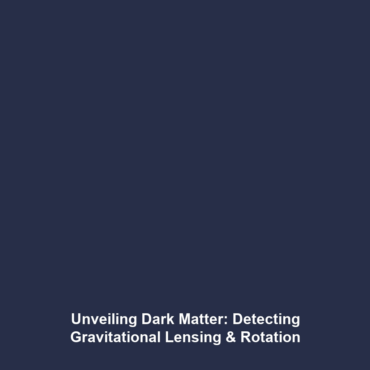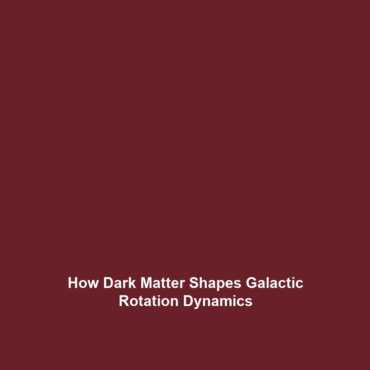How Does Dark Matter Compare to Ordinary Matter?
The comparison between dark matter and ordinary matter is crucial to understanding the universe’s structure and the forces shaping it. Dark matter, which constitutes approximately 27% of the universe, exerts gravitational influence yet remains invisible and undetectable through traditional means. In contrast, ordinary matter, making up only about 5% of the universe, encompasses all celestial bodies, including stars, planets, and living organisms. This article delves into the significance of understanding how these two types of matter interact within the broader context of dark matter and dark energy, providing insights into our cosmic framework.
Key Concepts
Understanding the distinction and relationship between dark matter and ordinary matter involves several key principles:
- Composition: Ordinary matter is composed of atoms, protons, neutrons, and electrons, which interact via electromagnetic forces. Dark matter is believed to be composed of yet undiscovered particles, possibly including WIMPs (Weakly Interacting Massive Particles), that do not interact via electromagnetic forces.
- Detection: Ordinary matter emits light and can be observed directly using telescopes. In contrast, dark matter cannot be seen directly and is identified through its gravitational effects on visible matter.
- Impact on Cosmic Structures: Dark matter plays a critical role in the formation of galaxies by providing gravitational scaffolding that ordinary matter gathers around, enabling the cosmic structure to evolve as we observe it today.
Applications and Real-World Uses
The exploration of how dark matter compares to ordinary matter leads to various fascinating applications:
- Understanding Galaxy Formation: Research into dark matter helps astronomers understand the processes behind galaxy formation and behavior.
- Astrophysics Simulations: Dark matter is integral to simulations that model the universe’s evolution, aiding in predictions of cosmic phenomena.
- Particle Physics Experiments: Investigations into the properties of dark matter particles are conducted using large particle colliders, enhancing our comprehension of fundamental physics.
Current Challenges
Studying the differences and interactions of dark matter and ordinary matter presents several challenges:
- Non-Detection: The elusive nature of dark matter, which does not engage with light, makes its study inherently difficult.
- Particle Identification: Distinguishing between various candidate particles for dark matter remains a pivotal issue in particle physics.
- Theoretical Models: Many theoretical models exist, but discrepancies between predictions and observed data create confusion and lead to challenges in reaching a consensus.
Future Research and Innovations
Future research into dark matter and its comparison with ordinary matter is filled with promising directions:
- Advanced Detection Methods: Upcoming breakthroughs in detection technologies may enhance our ability to identify dark matter particles.
- Space Missions: New missions to observe cosmic structures may provide deeper insights into dark matter’s influence on galactic dynamics.
- Collaborative International Efforts: Global collaborations in research organizations are expected to yield more comprehensive models of dark matter interaction with ordinary matter.
Conclusion
In summary, the comparison between dark matter and ordinary matter is essential for deciphering the intricate workings of our universe. By understanding the properties, applications, challenges, and future research avenues related to these two forms of matter, we can gain a deeper appreciation of the cosmic landscape dominated by dark matter and dark energy. For further reading on this captivating subject, explore our articles on dark energy and recent dark matter research.






